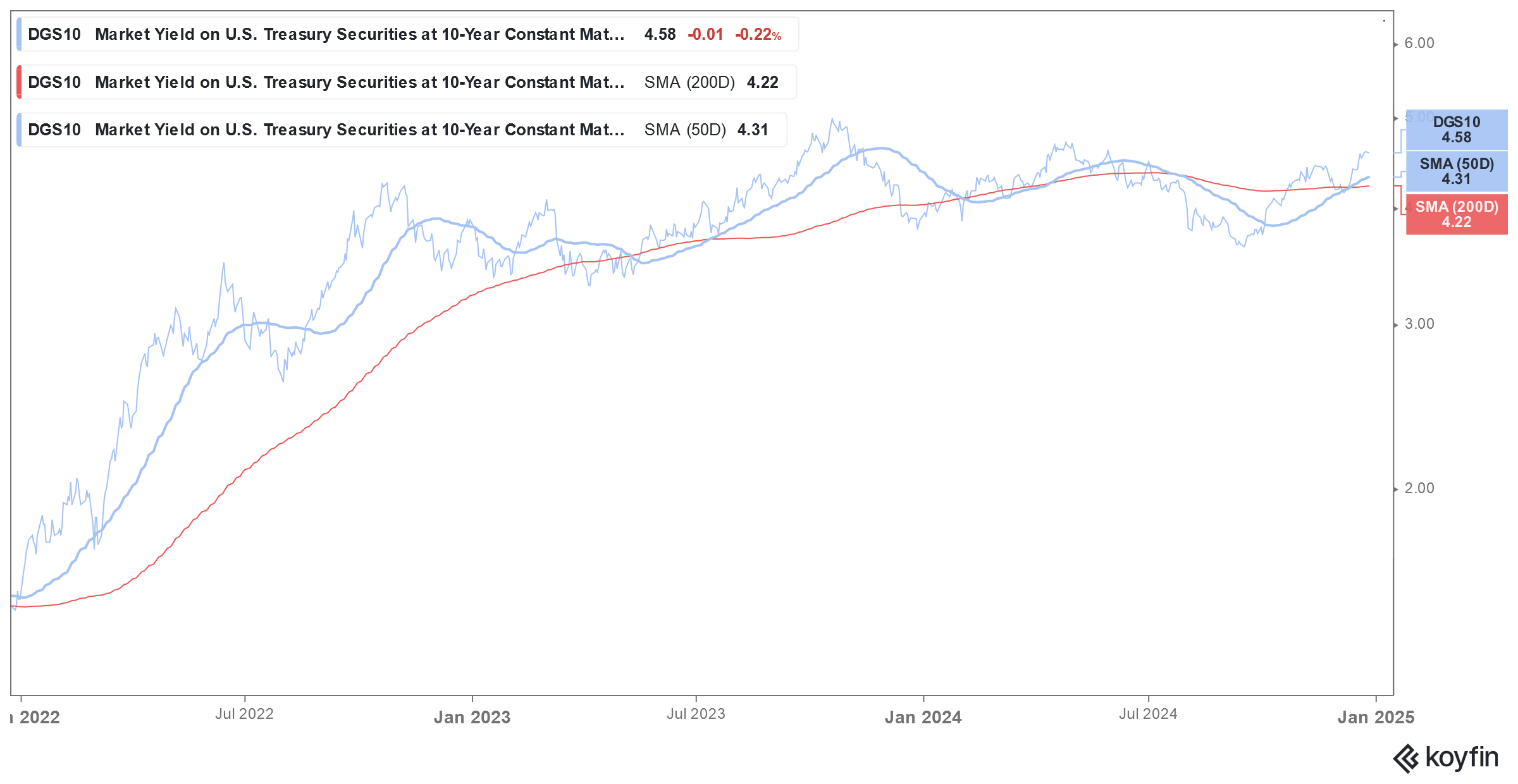Global Central Banks in Focus after Fed Goes Slow on Rate Cuts
Please note that we are not authorised to provide any investment advice. The content on this page is for information purposes only.
As widely expected, the US Federal Reserve slashed rates by 25 basis points at its meeting earlier this month. However, the Fed now sees only 2 rate cuts of 25 basis points in 2025 prompting other central banks to weigh their moves.
The current Fed fund rates are 4.25%- 4.5%, the same level they were in December 2022. The US central bank has cut rates by 100 basis points in three tranches this year. Commenting on the December rate cut, Fed chair Jerome Powell said, “Today was a closer call, but we decided it was the right call.”
Fed Sees Only Two Rate Cuts in 2025
While a December rate cut always looked like a done deal, markets were more interested in the rate cut outlook for the next year. The so-called dot plot calls for only two rate cuts each in 2025 and 2026, assuming their quantum to be 25 basis points.
At the press conference, Fed chair Powell said, “With today’s action, we have lowered our policy rate by a full percentage point from its peak, and our policy stance is now significantly less restrictive.”
He added, “We can therefore be more cautious as we consider further adjustments to our policy rate.”
The Fed chair emphasized, “We moved pretty quickly to get to here, and I think going forward obviously we’re moving slower.”
Treasury Yields and Mortgage Rates Rose Following the Fed Meeting
Following the Fed’s meeting, treasury yields and mortgage rates rose. The 10-year Treasury yield has surpassed 4.6% and is at a seven-month high. According to Jessica Lautz, deputy chief economist at the National Association of Realtors, “The market is just responding to the tone of the Fed’s message.”
Trump’s Tariffs Could Complicate the Picture
While US inflation has gradually come down after peaking in mid-2022, it is still higher than the 2% that the Fed targets. The core inflation was 3.3% in November
There are risks that Trump’s trade war could push up prices. The president-elect has vowed to impose tariffs on goods coming from countries ranging from Canada to China which could have some inflationary impact. While in his first tenure, Trump claimed that exporting countries bear the tariffs, economists disagree and say that the US consumer bears them.
In a recent interview, Trump said that he cannot “guarantee” that his tariffs won’t hurt Americans.
Current Treasury Secretary Janet Yellen also believes that tariffs would be destabilizing. According to Yellen, “So it would have an adverse impact on the competitiveness of some sectors of the United States economy and could significantly raise costs to households.” He added, “So this is a strategy I worry could derail the progress that we’ve made on inflation and have adverse consequences on growth.”
Fed Rate Cut Outlook 2025
Meanwhile, some analysts believe that the Fed would be more dovish in its rate cuts than the dot plot predicts. “We expect the Fed to deliver its next 25bp cut in March followed by two more 25bp cuts in June and September to a terminal rate range of 3.5-3.75%,” said Goldman Sachs in its note.
All said, given the uncertainty over the geopolitical situation and Trump’s tariffs, the Fed might take a more cautious stance toward rate cuts at least in the first half of the next year. Traders are also quite divided over the Fed’s policy in 2025 and while 12.9% of the traders see the US central bank cutting rates by 75 basis points next year, 26.6% see only a 50-basis point rate cut. 36.1% of the traders polled by the CME FedWatch Tool are betting on a 25-basis point rate cut in 2025 while 17.3% don’t see any rate cuts next year.
Other Central Banks Are Also Cautious on Rate Cuts
The Fed has led from the front in monetary policy over the last few years. It began its tightening spree in 2022 starting with 25 basis points in March 2022 followed by 50 basis points in May. In the next four meetings of 2022, it raised rates by 75 basis points – a pace not seen in years – but toned down the hike to 50 basis points in December. The US central bank raised rates four times in 2023 by 25 basis points each to lift the policy rates to the highest since 2007.
Other central banks also followed the Fed in raising their benchmark interest rates. Meanwhile, in 2024, the Fed began lowering rates and started with a 50 basis point cut in September followed by two rate cuts of 25 basis points each in November and December.
Global central banks were also either loosening their monetary policy or contemplating doing so shortly. With the Fed now looking to go slow on rate cuts in 2025 other central banks are also getting cautious.
ECB Don’t See Any Rate Hikes on the Table
ECB Governing Council member Robert Holzmann told Austrian paper Kurier, “I don’t see any interest rate hikes at the moment. What could happen, though, is that one takes more time until the next interest rate cut.”
He added, “Yes, there are signs of an upward trend in some energy prices. But there are also other scenarios as to how inflation could return, like via a stronger devaluation of the euro.”
Notably, the Eurozone’s annual inflation was 2.2% in November which is 20 basis points higher than what it was in October.
Meanwhile, the Chinese central bank is looking to pivot to a “moderately loose” monetary policy next year as compared to a “prudent” approach that the world’s second-largest economy had for 14 years.
That said, while the rest of the world is still battling inflation, China is coping with the problem of deflation amid a slowing economy.
According to Edmund Goh, head of China fixed income at Abrdn, “The PBOC needs to focus on combating deflation. We don’t think the domestic interest rate policy would be heavily influenced by Fed’s interest rate decision — whether in the short term or long term.”
India is meanwhile expected to cut rates by 25 basis points in February. The country’s central bank has kept its policy repo rate unchanged at 6.50% even as it has taken measures in its banking system.
All said, with inflation still above the target levels across many economies, more central banks are expected to be cautious in 2025 especially given the Fed’s somewhat hawkish stance towards rate cuts.






